摘要:
对 less 的各种用法做一次整理,顺便也可以当作参考手册。
引子
less 是一个 Linux 命令行实用程序,用于显示文件内容,它支持管道输入,所以能够被用于接收前一命令的标准输出病进行全屏展示。
less 是 more 的增强版本,它具有更全面的全文件导航能力,以及全文搜索能力。less 在大文件打开方面有很好的优化,在即时显示、快速加载等方面性能突出。less 还支持一次性打开多个文件,它将会逐一地显示这些文件的内容。
取名为 less 也因为一句名人名言:less is more。这句名言已经哲学化了。
基本使用
less 的基本使用方法有两种,一是打开一个或多个文件:
二是作为管道操作的末端:
在管理操作时,可能会常常用到 tail -f 等价的实时刷新模式:
被嵌入地、隐含地使用
在很多场所中 less 被通过 PAGER 环境变量而悄悄地使用。
一个典型的例子是 man 命令。当:
时,printf 的手册页将被显示在 less 的阅读界面中,如同这样:
阅读界面操作
在 less 显示的阅读界面中,按键即命令。
你可以随时按下 h 显示帮助屏,q 将退出帮助屏。
其它最常用的按键命令有:
稍后键盘一节中我们会完整地介绍全部可用的按键命令。
搜索
在 less 的阅读界面中,底部行被称作状态命令行。如果你在界面中按键,则该行的状态提示暂时被隐藏,带有 : 提示符的命令行输入会被显示。
当你按下 / 进入搜索状态时,状态命令行等待你继续键入 pattern。
你可以在搜索时使用正则式 pattern。
重复上一次搜索是 n 。
如果你键入 -J 序列,那么阅读界面左侧将显示一列垂直的状态栏,而 pattern 匹配的行在这个状态栏中会有显示:
标记(Mark)
标记是一个字母,大小写敏感。标记等同于我们在 Visual Studio Code 这样的图形化文字编辑器中的书签。
在阅读界面按下 ma 按键序列,m 命令将会为你的当前阅读位置建立一个名为 a 的标记。稍后你可以使用 'a 返回到这个位置。
如果你键入 -J 序列,那么阅读界面左侧将显示一列垂直的状态栏,而 a 标记在这个状态栏中会有显示:
选项
选项既可以从命令行指定,也可以在 less 阅读界面中通过前缀字符序列 - 或 -- 直接键入和进行翻转。
例如你可以键入 -? 来显示帮助屏(尽管 h 来得更简便)。
less [-[+]aABcCdeEfFgGiIJKLmMnNqQrRsSuUVwWX~] [-b space] [-h lines] [-j line] [-k keyfile] [-{oO} logfile] [-p pattern] [-P prompt] [-t tag] [-T tagsfile] [-x tab,...] [-y lines] [-[z] lines] [-# shift] [+[+]cmd] [--] [filename]...
复制代码
less 允许从命令行直接键入命令,使用 + 前缀即可,所以 +F 代表着进入滚动刷新模式,例如:
less +F /var/log/messages
复制代码
注意你仍然可以使用 less 的命令行专有的选项,例如 -F 代表着文件内容不够一屏时立即退出 less。
如果你使用了 ++ 前缀,那么该命令将会被自动应用到每一个文件。
less 可以一次性打开多个文件并依次显示。
主要的命令行选项
有效的命令行专有选项大体上如下表(由于描述文字很简单故保留原文):
-? ........ --help Display help (from command line). -a ........ --search-skip-screen Search skips current screen. -A ........ --SEARCH-SKIP-SCREEN Search starts just after target line. -b [N] .... --buffers=[N] Number of buffers. -B ........ --auto-buffers Don't automatically allocate buffers for pipes. -c ........ --clear-screen Repaint by clearing rather than scrolling. -d ........ --dumb Dumb terminal. -D [xn.n] . --color=xn.n Set screen colors. (MS-DOS only) -e -E .... --quit-at-eof --QUIT-AT-EOF Quit at end of file. -f ........ --force Force open non-regular files. -F ........ --quit-if-one-screen Quit if entire file fits on first screen. -g ........ --hilite-search Highlight only last match for searches. -G ........ --HILITE-SEARCH Don't highlight any matches for searches. -h [N] .... --max-back-scroll=[N] Backward scroll limit. -i ........ --ignore-case Ignore case in searches that do not contain uppercase. -I ........ --IGNORE-CASE Ignore case in all searches. -j [N] .... --jump-target=[N] Screen position of target lines. -J ........ --status-column Display a status column at left edge of screen. -k [file] . --lesskey-file=[file] Use a lesskey file. -K --quit-on-intr Exit less in response to ctrl-C. -L ........ --no-lessopen Ignore the LESSOPEN environment variable. -m -M .... --long-prompt --LONG-PROMPT Set prompt style. -n -N .... --line-numbers --LINE-NUMBERS Don't use line numbers. -o [file] . --log-file=[file] Copy to log file (standard input only). -O [file] . --LOG-FILE=[file] Copy to log file (unconditionally overwrite). -p [pattern] --pattern=[pattern] Start at pattern (from command line). -P [prompt] --prompt=[prompt] Define new prompt. -q -Q .... --quiet --QUIET --silent --SILENT Quiet the terminal bell. -r -R .... --raw-control-chars --RAW-CONTROL-CHARS Output "raw" control characters. -s ........ --squeeze-blank-lines Squeeze multiple blank lines. -S ........ --chop-long-lines Chop (truncate) long lines rather than wrapping. -t [tag] .. --tag=[tag] Find a tag. -T [tagsfile] --tag-file=[tagsfile] Use an alternate tags file. -u -U .... --underline-special --UNDERLINE-SPECIAL Change handling of backspaces. -V ........ --version Display the version number of "less". -w ........ --hilite-unread Highlight first new line after forward-screen. -W ........ --HILITE-UNREAD Highlight first new line after any forward movement. -x [N[,...]] --tabs=[N[,...]] Set tab stops. -X ........ --no-init Don't use termcap init/deinit strings. -y [N] .... --max-forw-scroll=[N] Forward scroll limit. -z [N] .... --window=[N] Set size of window. -" [c[c]] . --quotes=[c[c]] Set shell quote characters. -~ ........ --tilde Don't display tildes after end of file. -# [N] .... --shift=[N] Horizontal scroll amount (0 = one half screen width) ........ --no-keypad Don't send termcap keypad init/deinit strings. ........ --follow-name The F command changes files if the input file is renamed. ........ --use-backslash Subsequent options use backslash as escape char.
复制代码
常用选项
其中或许会被常常用到的可能有:
状态命令行有两种风格:short, medium。前者显示一个 : 提示符,后者显示一系列文档状态信息如行号、显示位置百分比等等。
如果在阅读界面中使用 -N,则行号会被显示在状态命令行中。
如果在命令行使用了 -N,那么行号可以被显示在每一行的左侧。对于:
会有:
键盘
快捷键(less)
在手册页阅读界面中,可以使用快捷键来帮助阅读。
由于手册页的显示是使用操作系统 Shell 环境中的默认 PAGER 来完成的,所以快捷键遵循相应 PAGER 的功能映射。
大多数系统中现在默认采用 less 作为默认 PAGER,因此下面介绍 less 快捷键,但针对 manpage 修正描述文字。
基本操作
带有 N 的命令,允许 N cmd 的输入方法。
以 f 命令为例,简单地键入 f 则屏幕向下卷滚,内容上移一行;但你可以键入 31f 使得内容一次性地向上滚动 31 行。与其相反的是 b 命令,可以使屏幕向上卷滚,内容下移一行。
F 命令具有即时刷新文件内容的能力,它相当于增强版的 tail -f 功能,不但可以随时刷新和显示最新的文件内容,也能够暂时停止刷新,在已有的内容中导航和检索,而且还能继续再次地使用 F 进入即时刷新的状态。
搜索
一个 pattern 可以由以下按键(ASCII 字符)进行前缀修饰:
跳转
g 这样的按键,在阅读界面可以直接生效。但你也可以连续按键,例如 1 3 g 可以转到第 13 行。
一个标记位置(mark)是一个大写字母或者小写字母。另外,下面是预定义的标记位置:
切换文件
杂项
环境变量
PAGER
less 现在是大多数 Linux 发行版的 PAGER 默认值。因此当 PAGER 没有显式设定时,系统总是使用它。
LESS
你可以为 less 指定预设的命令行选项,例如:
这使得 less 退出之后不会清屏。
行编辑
less 阅读界面中,按键输入会显示在屏幕最下面一行,同时进入行编辑模式。有时候你可以像 vi 一样按下 : 进入到命令的行编辑模式。
下面是这个行编辑的键盘操作方法(由于描述文字很简单故保留原文)。
RightArrow ..................... ESC-l ... Move cursor right one character. LeftArrow ...................... ESC-h ... Move cursor left one character. ctrl-RightArrow ESC-RightArrow ESC-w ... Move cursor right one word. ctrl-LeftArrow ESC-LeftArrow ESC-b ... Move cursor left one word. HOME ........................... ESC-0 ... Move cursor to start of line. END ............................ ESC-$ ... Move cursor to end of line. BACKSPACE ................................ Delete char to left of cursor. DELETE ......................... ESC-x ... Delete char under cursor. ctrl-BACKSPACE ESC-BACKSPACE ........... Delete word to left of cursor. ctrl-DELETE .... ESC-DELETE .... ESC-X ... Delete word under cursor. ctrl-U ......... ESC (MS-DOS only) ....... Delete entire line. UpArrow ........................ ESC-k ... Retrieve previous command line. DownArrow ...................... ESC-j ... Retrieve next command line. TAB ...................................... Complete filename & cycle. SHIFT-TAB ...................... ESC-TAB Complete filename & reverse cycle. ctrl-L ................................... Complete filename, list all.
复制代码
参考
🔚
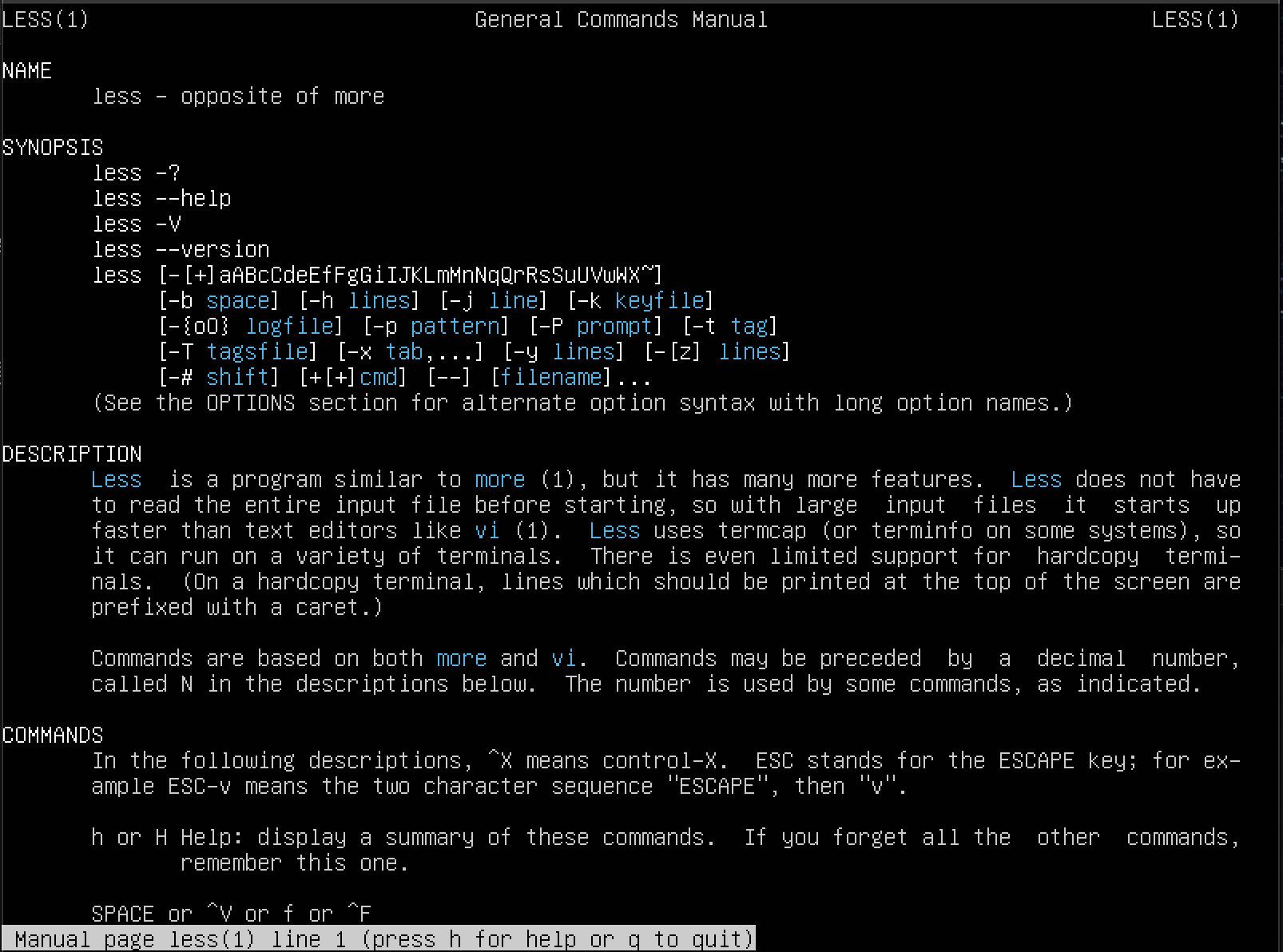

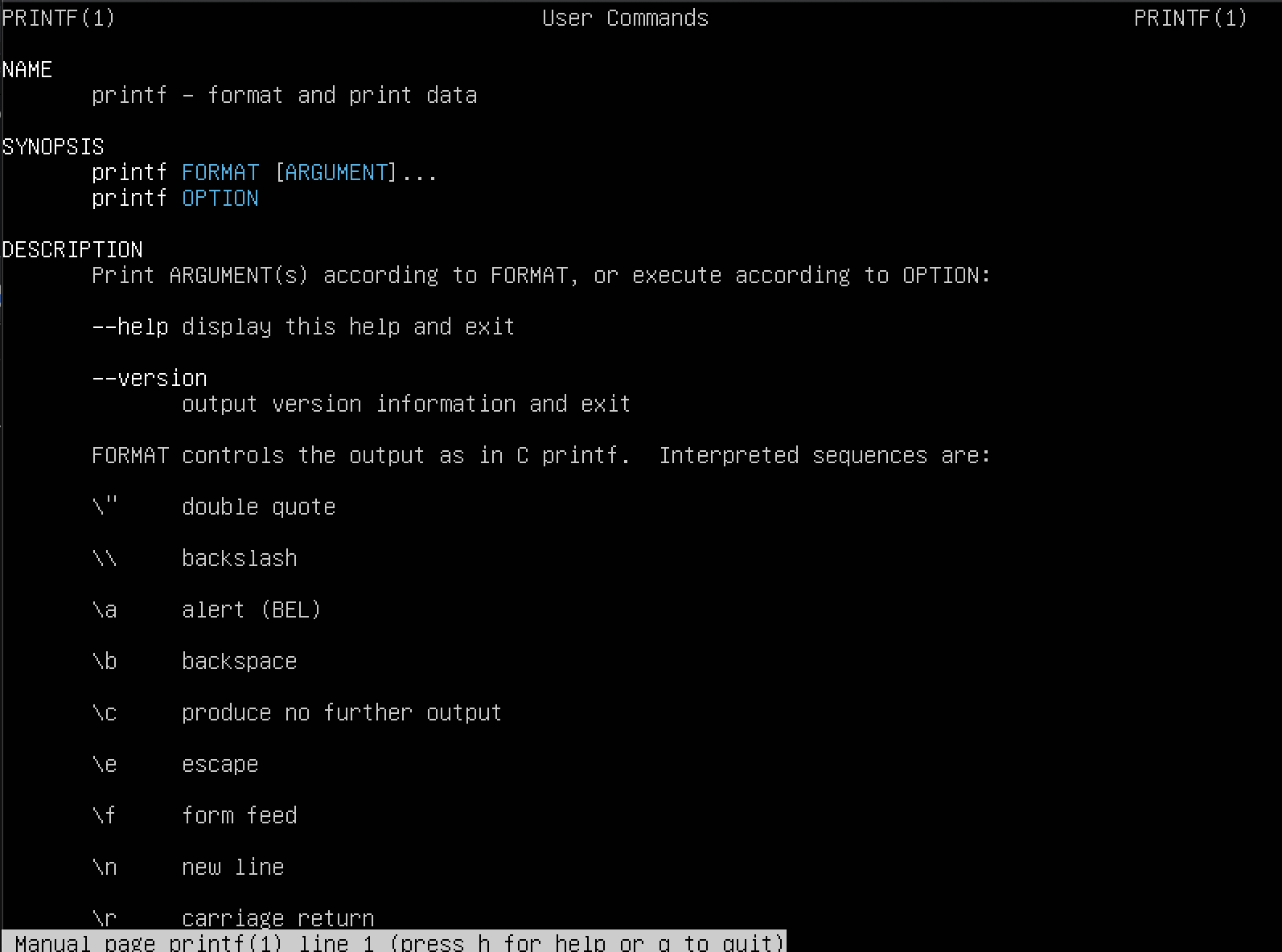
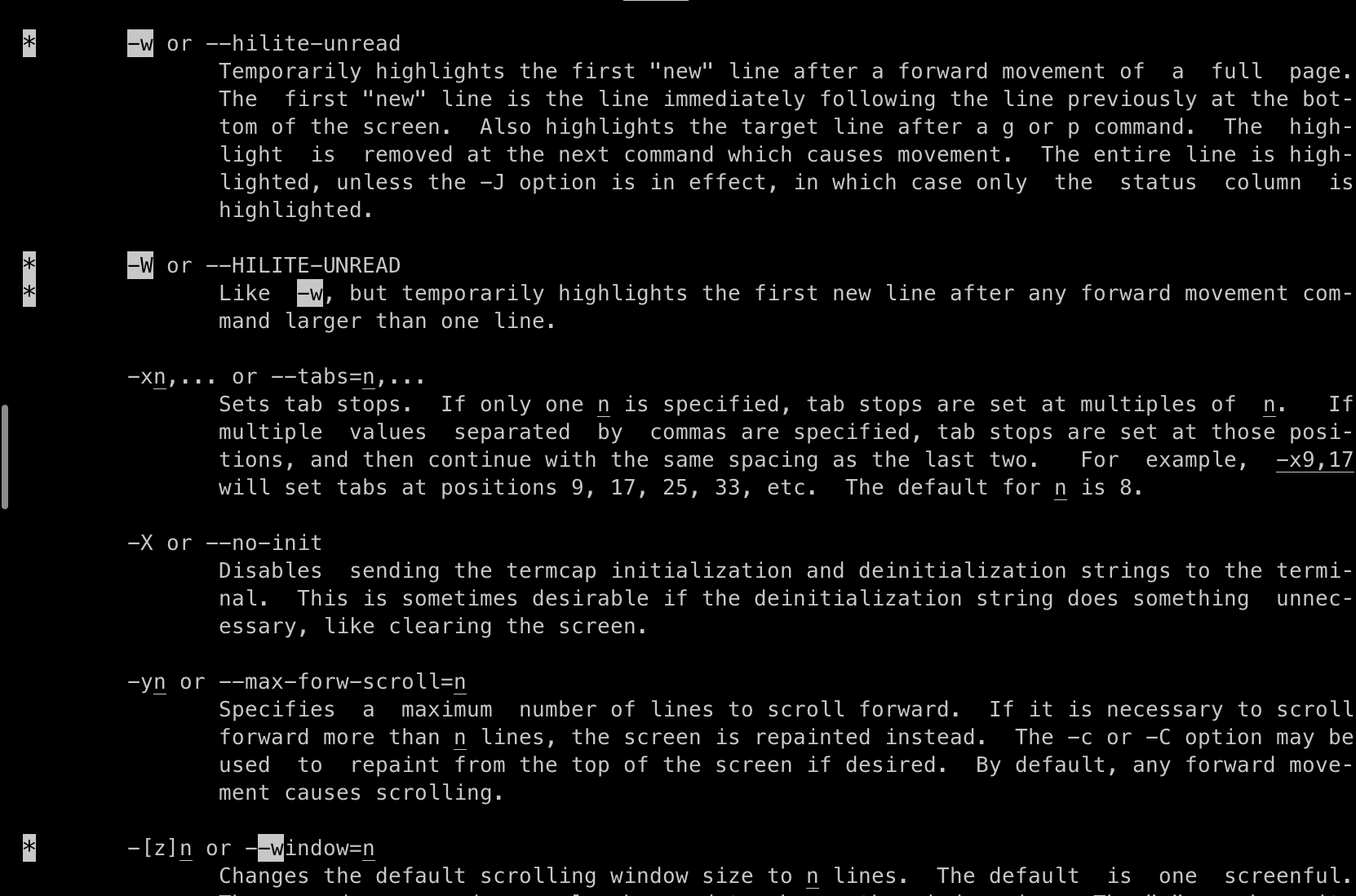
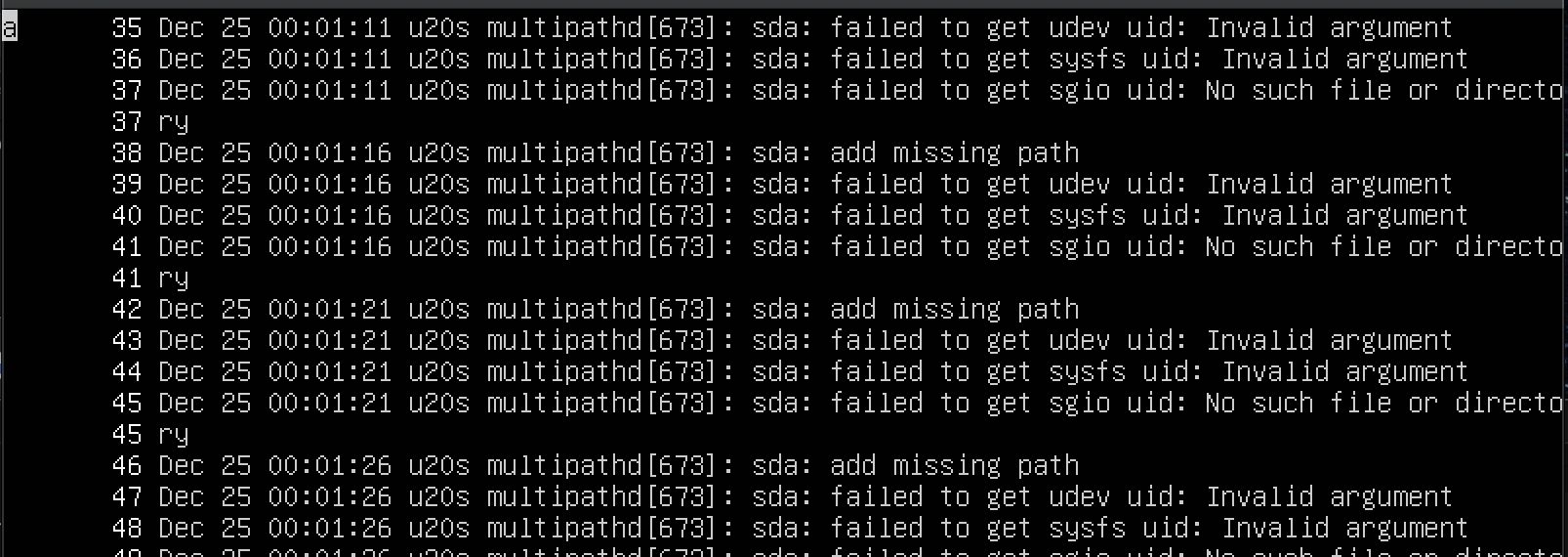
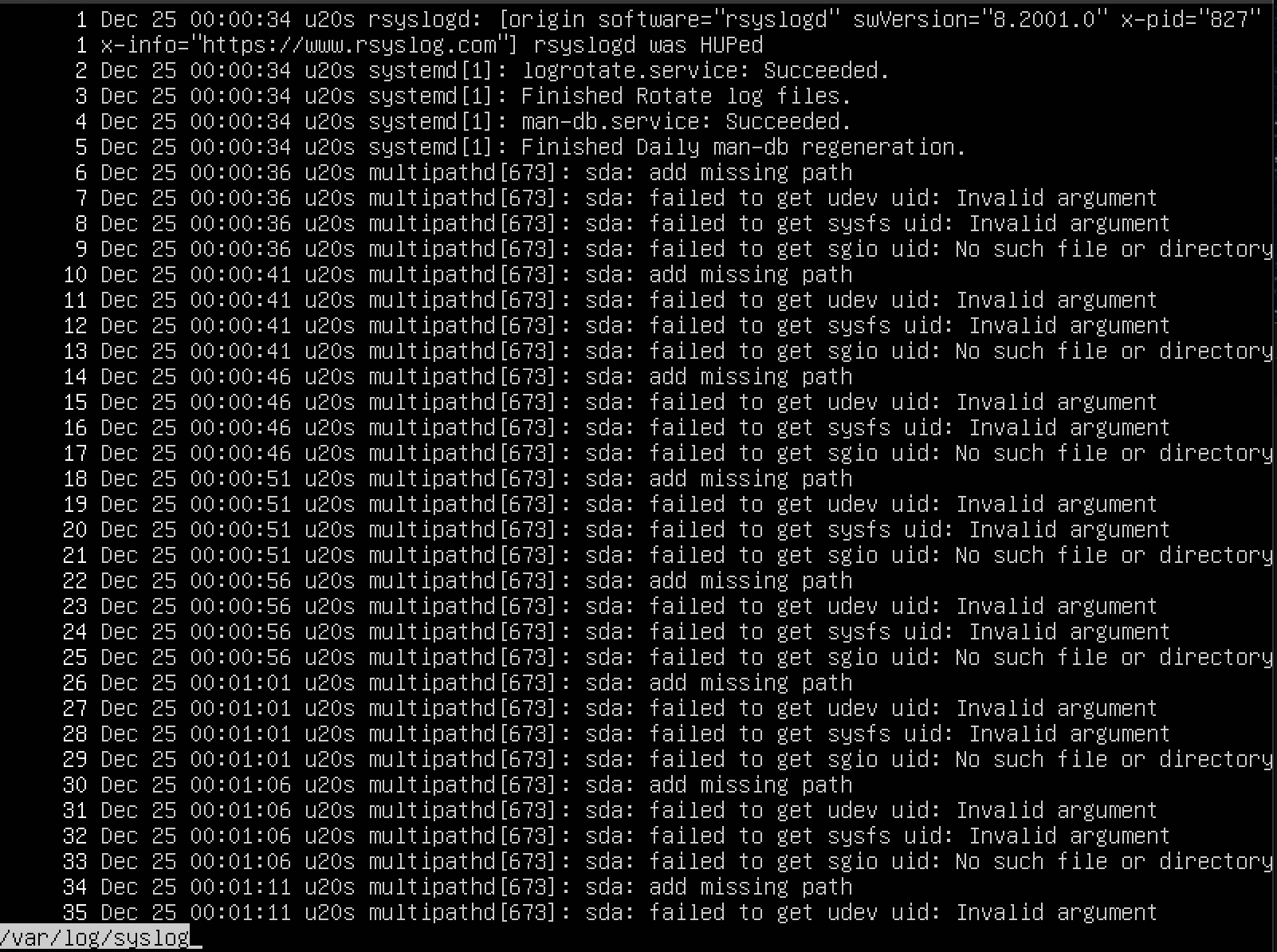












评论